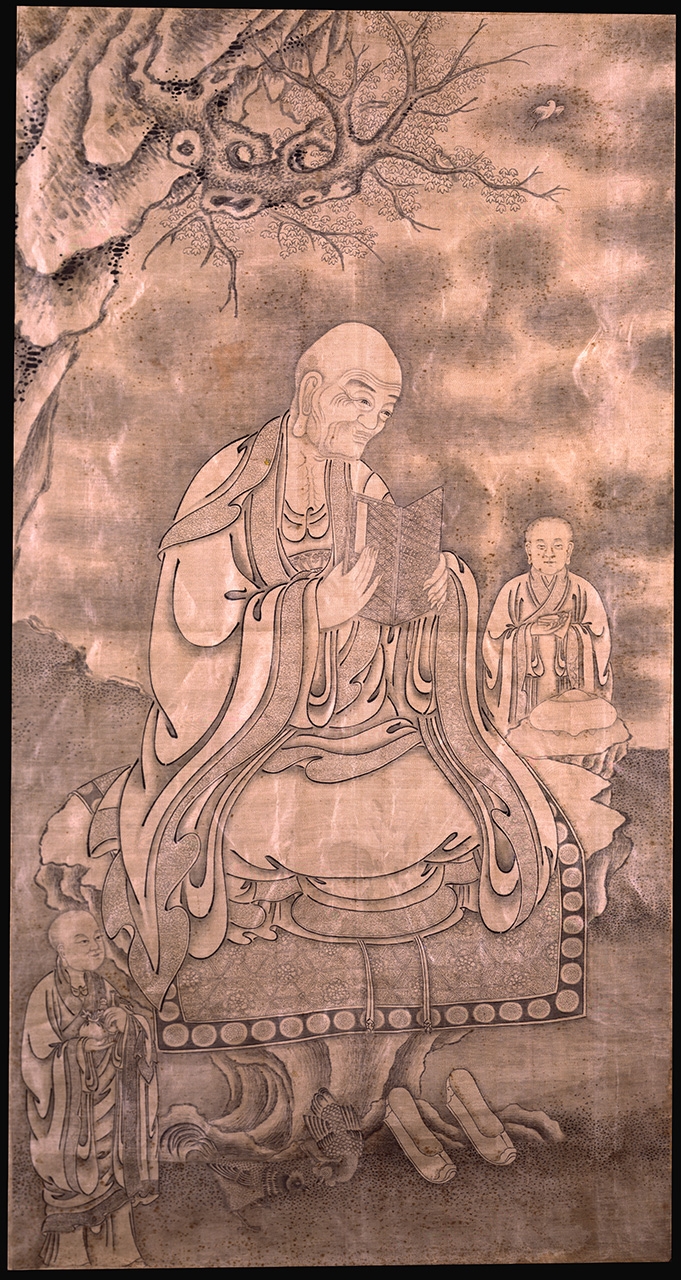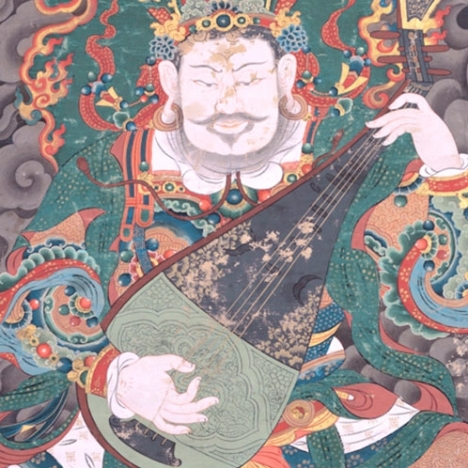
Pantaka is one of the sixteen arhats, the original disciples of the Buddha. The arhat painting genre found in Tibet was adopted from China and carried with it many aspects of Chinese visual culture.
The medium—ink on silk—is itself Chinese. The painting employs a classic Chinese monochromatic ink style (shui mo hua) with a strong use of shading and ink wash. The figural style and landscape, punctuated with wet dots of ink (cun), depicted here are reminiscent of Chinese luohan (arhat) paintings by late Ming to early Qing painters like Ding Yunpeng (1547?–1628). This painting is related to a set kept at Palpung Monastery, in Kham on the southern Sino-Tibetan border, where they are known as the Kyarama Arhats, which translates as “Arhats Atop Rocks.”
26 1/4 x 18 3/4 in.
C2001.5.2, HAR65016
- https://dev.rubinmuseum.org/images/content/710/c2001.5.2har65016__zoom.jpg
- https://dev.rubinmuseum.org/images/content/710/c2001.5.2har65016__zoom.jpg


